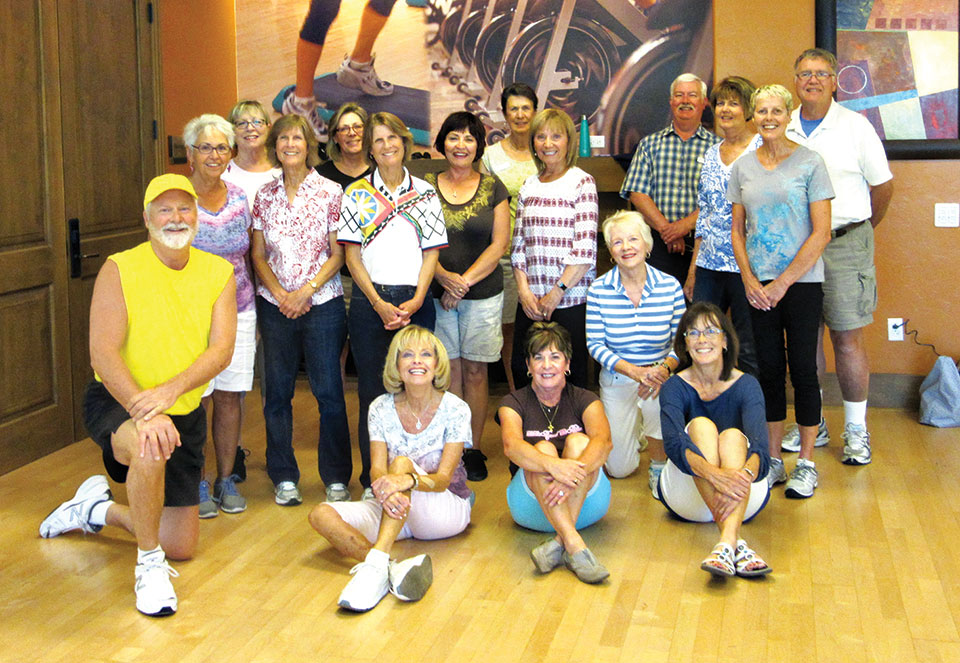
Spring line dancing in the Hacienda is popular with these Level 2 dancers. The temps are always mild inside until the dancing heats us up. The summer is almost here, and newcomers will find that June is usually our hottest month.
Dr. Mark Magdanz
“We dance for laughter, we dance for tears, we dance for madness, we dance for fears, we dance for hopes, we dance for screams, we are the dancers, we create the dreams.” Albert Einstein
“Use It or Lose It: Dancing Makes You Smarter, Longer.” Richard Powers Stanford University
You may not have heard about the New England Journal of Medicine report on effects of recreational activities on mental acuity in aging. This article is heavily excerpted from Richard Powers’ article of July 30, 2010.
In a nutshell: 21-year study of seniors 75+ through the Albert Einstein College of Medicine N.Y.; funded-National Institute on Aging; published-New England Journal of Medicine. The method for objectively measuring mental acuity was monitoring rates of dementia including Alzheimer’s disease. The study explored if physical or cognitive activities influenced mental acuity. What they discovered was some activities had a significant beneficial effect; other activities surprisingly had none.
Studied cognitive activities included reading books, writing for pleasure, crossword puzzles, playing cards and playing musical instruments. Studied physical activities included playing tennis/golf, swimming, bicycling, dancing, walking and housework. A big surprise of the study was that almost none of the physical activities appeared to offer any protection against dementia. There are cardiovascular benefits, of course, with all exercise, but the focus of this study was the activities’ effect on the mind.
There was one important exception: the only physical activity offering protection against dementia was frequent dancing.
Summarizing:
Reading – 35% reduced risk of dementia
Bicycling and swimming – 0%
Doing crossword puzzles at least four days a week – 47%
Playing golf – 0%
Dancing frequently – 76%. The greatest risk reduction of any activity studied, cognitive or physical.
Now we all now know that every physical activity is good for you in some ways! Key to physical/mental training is consistently participating for months/years the rest of your lifetime. There are plausible arguments for why one type of exercise is superior to another, but the way to benefit from any one is to just do it.
Now it is time to reserve Ranch classes beginning June 28, 2017. There are two different class levels and faster/fun hours of practice are available each week. Build basic step knowledge/fitness. Level 1 and 2 build aerobic capacity, balance and foot speed. Different levels challenge memory, strength/balance and endurance. Gradual improvement occurs while having fun. Level 1 Line Dance with Rebecca is foremost enjoying learning, exercise and life less seriously. Level 2 supports the more experienced/fit dancers. Step into more difficult dancing only as you know steps and performance. Summer series is nine classes in all levels of difficulty. Alternate days dancing available in SaddleBrooke.
Want to Line Dance with Rebecca in June?
Rebecca is a 13-year SB resident and leading SaddleBrookers/Ranchers line dance 10 years. For information about line dancing lessons at SaddleBrooke Ranch contact Rebecca at linedancin4SB@aol.com or phone 818-2656.
